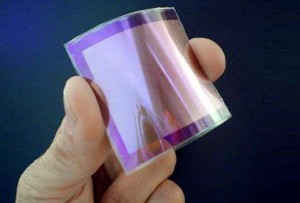
On the discussion panel were Alan Heeger, a physicist at the University of California who shared the 2000 Nobel Prize in Chemistry for his work on electrically conducting plastics, and Deli Wang, a materials scientist at the University of California, San Diego.
Both focus their research on related to technology. Alan develops solar cells from plastics and other organic materials while Deli tries to develop solar cells using tiny inorganic nanowires.
Alan is an optimist. He believes solar cell technology will be contributing significantly to our energy needs by 2020 as costs are dropping rapidly.
Deli said the efficiency of nanowire solar cells have been increasing dramatically in the past few years, from tenth of 1% to 15-16%. Still lower than the best Si cells (silicon), but it’s improving fast.
He added the main challenges faced by nanowire solar cells include managing the surface states of nanowires to reduce the surface recombination, including finding the right materials, and designing/fabricating devices that allow the effective carrier collection.
As people who follow solar power development are aware, efficiency is the industry’s Holy Grail. Alan said the main problem is the need for new materials.
“We need materials with a smaller energy gap to provide better harvesting of the solar radiation. We need materials with higher mobilities so that we do not lose the photogenerated carriers by recombination before they are extracted at the electrodes†he said. He noted the efficiency of organic solar cells (the ones not made of silicon, the industry standard) is growing steadily and current record values in the lab are approximately 10%.
He added that organic PV technology is not a direct competitor with conventional Si solar cell technology. The organic cells are light weight, flexible and rugged. Besides, they can be made semitransparent. For that reason, organic PV can be used in a range of products that are not possible with Si cells, such as semitransparent windows as well as the covering and powering of green houses. He expects organic solar cell panels to be on the market well before 2020 in a growing number of specialized applications.
In terms of the advantages of nanowire solar cells, Deli said these and other nanomaterial solar cells require less materials compared with single crystal Si cells. The new materials are made by low-cost process, such as solution method, and cheaper device processing (e.g. printing). Si cells require high purity and more materials, therefore larger capital and energy is necessary to produce them. New nanomaterials are light weight, portable and flexible. A wide range of materials can be used, including organic conjugated polymers. Best of all, it is possible to develop new materials with elements that are abundant in the earth.
To read the full chat, see below:
You should follow us here.





